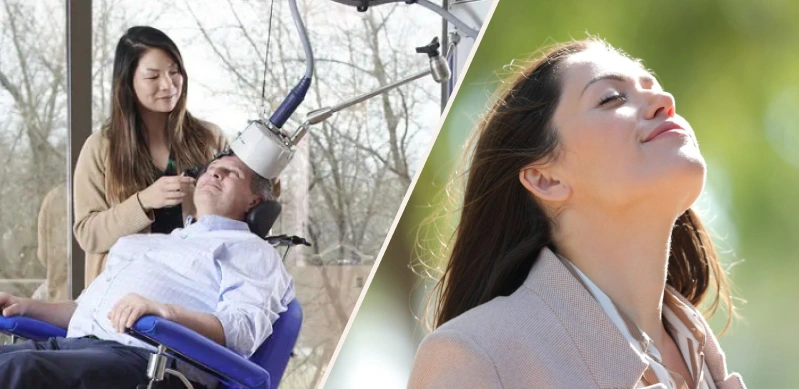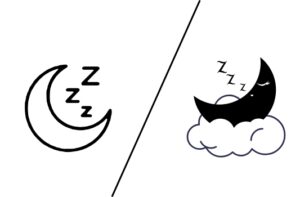Transcranial Magnetic Stimulation (TMS) is a non-invasive brain stimulation technique that uses electromagnetic currents to activate specific regions of the brain. It has been used for decades in the medical field to treat various neurological and psychiatric disorders, such as depression, anxiety, and chronic pain. TMS works by generating pulses of magnetic fields through a coil placed on the scalp. These magnetic fields pass through the skull and stimulate the targeted area of the brain responsible for regulating mood and emotions.
But how exactly does TMS work? Let’s dive deeper into this revolutionary treatment method and explore its benefits, side effects, and potential applications.
TMS is a type of brain stimulation therapy that uses magnetic fields to stimulate nerve cells in the brain. It was first developed in the 1980s and has since been approved by the Food and Drug Administration (FDA) for treating various mental health conditions.
The procedure involves placing an electromagnetic coil on the scalp, which then produces pulses of magnetic fields at specific frequencies. These pulses create small electrical currents in the targeted area of the brain, stimulating nerve cells and altering their activity.
This non-invasive nature of TMS makes it a popular alternative to traditional treatments such as medication or electroconvulsive therapy (ECT). It also does not require any anesthesia or sedation, making it a safe and well-tolerated treatment option for many patients.
TMS therapy is a form of TMS treatment that involves multiple sessions over several weeks. Each session typically lasts around 20-30 minutes, and the patient can resume their daily activities immediately after.
During TMS therapy, the coil is placed on different areas of the scalp depending on the targeted brain region. This allows for more precise stimulation and better outcomes.
The number of TMS therapy sessions required varies from person to person, but most patients undergo between 20-30 sessions. Some may require additional maintenance sessions to sustain the effects of TMS.
TMS is primarily used to treat major depressive disorder, a mood disorder characterized by persistent feelings of sadness and loss of interest. It has also been found to be effective in treating other mental health conditions such as anxiety disorders, post-traumatic stress disorder (PTSD), and obsessive-compulsive disorder (OCD).
The following are the conditions that TMS has been approved by the FDA to treat:
The mechanism of action behind TMS is not fully understood, but it is believed to work by producing changes in brain activity. The magnetic fields generated by the coil stimulate nerve cells and promote the release of neurotransmitters, which regulate mood and emotions.
Research has shown that people with depression often have lower levels of certain neurotransmitters, such as serotonin and dopamine. By stimulating specific regions of the brain responsible for these chemicals’ production, TMS can help restore balance and alleviate symptoms of depression.
TMS also stimulates neural plasticity, which is the brain’s ability to form new connections and reorganize itself. This process may be crucial in treating mental health conditions as it helps to improve cognitive functioning and emotional regulation.
The effects of TMS treatment vary from person to person, but most patients report improvements in their symptoms after a few weeks of therapy. Some may experience relief early on, while others may require more sessions before noticing significant changes.
Research has shown that TMS is effective in about 50-60% of patients with depression who have not responded to traditional treatments. The results are long-lasting, and many patients continue to experience symptom relief even after the completion of therapy.
TMS may not be effective for everyone, and some patients may not respond to the treatment at all. In such cases, healthcare providers may recommend alternative treatments or a combination of different therapies.
It is essential to have realistic expectations when undergoing TMS therapy and understand that it may take time to see significant improvements. Patience and open communication with your healthcare provider are crucial for achieving the best possible outcomes.
If it doesn’t work for you, don’t be discouraged. There are many other treatment options available, and your healthcare provider can help you find the one that works best for you.
The area of the brain targeted by TMS depends on the condition being treated. For depression, the most common target is the left dorsolateral prefrontal cortex, which is involved in mood regulation and decision-making.
For OCD, the target area may be the anterior cingulate cortex, which is responsible for attention and impulse control. Similarly, different areas of the brain are stimulated for other mental health conditions. Furthermore, TMS can be tailored to target different depths within the brain, allowing for even more precise stimulation.
TMS is a safe and effective brain stimulation therapy that has helped many people with various mental health conditions. It works by stimulating specific regions of the brain, promoting neural plasticity, and regulating neurotransmitters. Although it may not work for everyone, it has shown promising results in treating depression and other disorders.
If you are considering TMS as a treatment option, consult with your healthcare provider to determine if it is right for you. And remember, there is always hope for finding relief from mental health conditions through proper treatment and support.
For more information and guidance related to Mental and Behavioral Health, get in touch with our specialized Adult Mental Health Expert!





